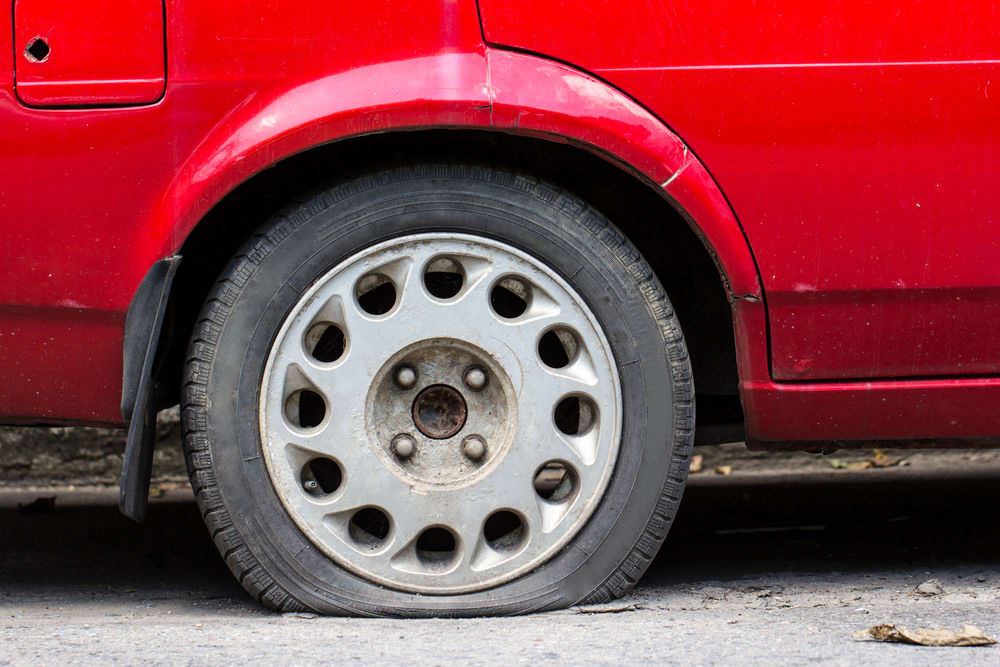

Your tire pressure monitoring light comes on. Before you have a chance to even process what that means, you hear the dreaded flap-flap-flap and your car feels like it has an anchor attached to the back. You limp it off the road and into a parking lot, and call the tow truck.
It’s a flat tire.
Can the mechanic fix it on the spot, or will he put the spare tire on? Or, worse yet, will you have to get towed to the mechanic? Will your tire be repairable or will you have to buy one or more new tires? Hopefully it can be patched.
Repairing a flat tire
Yes, it is possible to repair a flat tire most of the time. Almost all flat tires are caused by punctures by nails or screws, or objects less than ¼ inch in diameter. That’s a good thing, since tire repair procedures recommend you don’t repair a flat tire with a hole larger than ¼ inch, and instead replace the tire.
Should your tire be punctured in the tread, it will likely be repairable. On the other hand, if the puncture is on the shoulder of the tire or in the sidewall, it is not recommended that it be repaired, but should instead be replaced. The shoulder and the sidewall are constantly flexing while driving, and an attempt to seal the hole will let loose shortly after driving.
How should my tire be repaired?
There is only one correct way to repair a steel-belted radial, which virtually all modern tires are. That method is a combination patch and plug. The plug is pushed through the hole from the inside of the tire, and the attached patch is sealed overtop of the entry point.
Any other type of repair is improper, including a patch from the inside or simply a plug pushed through the puncture. A rule of thumb is if the tire isn’t removed from the rim to be repaired, it is not an approved repair.
Steel-belted radials nearly encompass all modern tires. If your steel-belted tire has been punctured, it needs to be repaired as soon as possible to prevent deterioration. If water enters the steel belts, they can corrode or rust, causing tire failure down the road.



